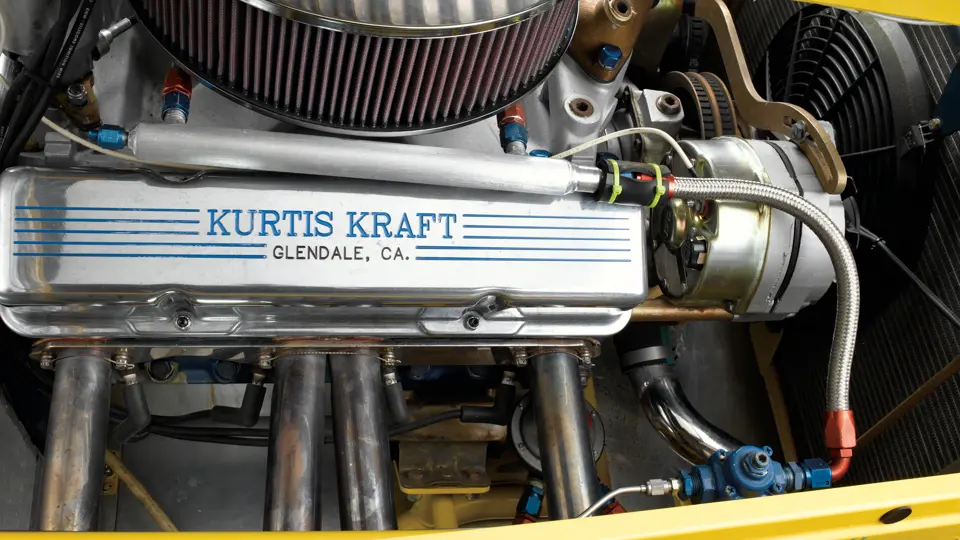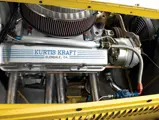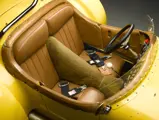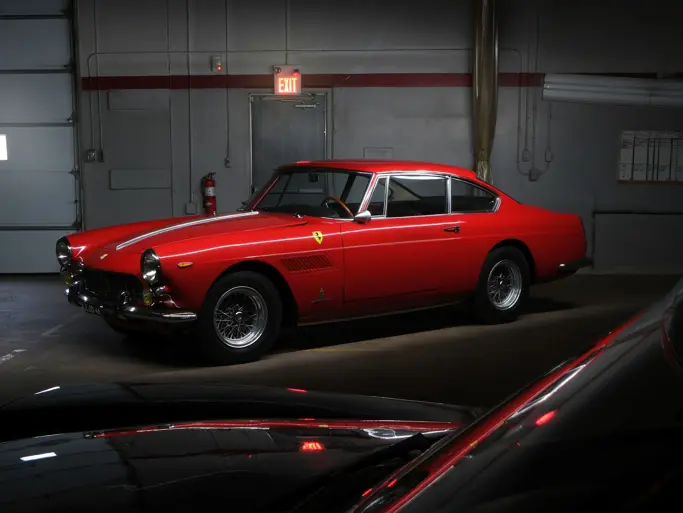400 cu. in. small block Chevrolet engine with Brownfield aluminum cylinder heads, NASCAR Jericho four-speed transmission with quick-change rear end and Quartermaster double-disc clutch, JFZ disc brakes, 32-gallon fuel cell, aluminum radiator.
- A very faithful recreation built with help from Arlen Kurtis
- Body from original tooling with original frame side rails
- One of three cars built by John Ward to contest 1991 Carrera Panamericana
- Extremely fast and race proven
Frank P. Kurtis was the preeminent American builder of racing cars in the decade that followed World War II. Just as Harry A. Miller came to dominate the decade of the 1920s, so did Kurtis designs become the standard for race cars of the late 1940s and 1950s. The shape of his cars exemplified beauty in motion, and their mechanical underpinnings were the product of intuitive genius. At Indy, Kurtis recorded eight poles, five wins and four front rows.
Following a successful 1952 racing season, which included eight Kurtis cars finishing in the top ten places at Indy, Frank Kurtis announced the introduction of the 500S Sports Car. He designed the 500S to meet Federation Internationale de L’Automobile (FIA), the international racing organization, rules for sports cars. Approximately 20 cars were produced over a two-year period. Motor Life wrote that the Kurtis 500S “practically owned West Coast sports car racing for several years.” Speed Age said that “the Kurtis 500S ranked with the C-Type Jag, Mercedes and Ferrari in overall performance and were close competitors against such combinations as Phil Walters in the Cunningham C4R and Jim Kimberly’s 4.5 Ferrari.” Jack Ensley drove his very popular #17 Kurtis 500S to a SCCA B Modified National Championship. Four Americans raced Kurtis 500 sports cars in the 1953 Carrera Panamericana.
In 1991, sports car enthusiasts around the world were surprised, amazed and delighted with the announcement of the resumption of The Mexican Road Race – La Carrera Panamericana! Race car builder John Ward took notice. American car enthusiasts who came of age in a later decade may think Corvette, Shelby Cobra or Ford GT40 as the first American road racers to go head to head with Europe’s finest. But Ward moved to Southern California at age 13 and knew that Frank Kurtis had accomplished this monumental task years before at his race car shop in Glendale, California. And to compete in the 1991 La Carrera, you needed a pre-1954 vintage car.
Purchasing an original 1953 500S was virtually impossible. Only 14 cars are known to exist and none were for sale at any price. So John decided to build a reconstruction of the original design. Importantly, he was able to locate Frank Kurtis’ son, Arlen, who supplied him with sets of original frame side rails plus valuable insight about the original construction of the 500S cars. Body panels were made from factory tooling. From that foundation, he completed three cars utilizing his life-long knowledge and experience of race car design and construction. The cars were built specifically for the La Carrera Race. And please note – he won the race, beating 112 other international entrants! The car presented today is one of the three cars built by Mr. Ward for La Carrera. Chassis 029, it is a sister car to John’s winning entry and is equipped with a 400-cubic inch small block, dry sump Chevrolet engine with Brownfield aluminum cylinder heads and a NASCAR Jericho four-speed transmission. Other outstanding equipment includes an engine oil cooler, Joe Hunt magneto, a Quartermaster double-disc clutch, Grand National quick-change rear end, JFZ disc brakes, Lee power steering, Halibrand pin-drive knock-offs, stainless steel exhaust, 32-gallon fuel cell and an aluminum radiator.
The car is eligible for historic events and is street legal with Arizona title for 1953 Kurtis 500S (VIN KK500S029). The ultimate “Cobra killer,” serious drivers are asked to strap in, hang on and drive a truly iconic American racing roadster.




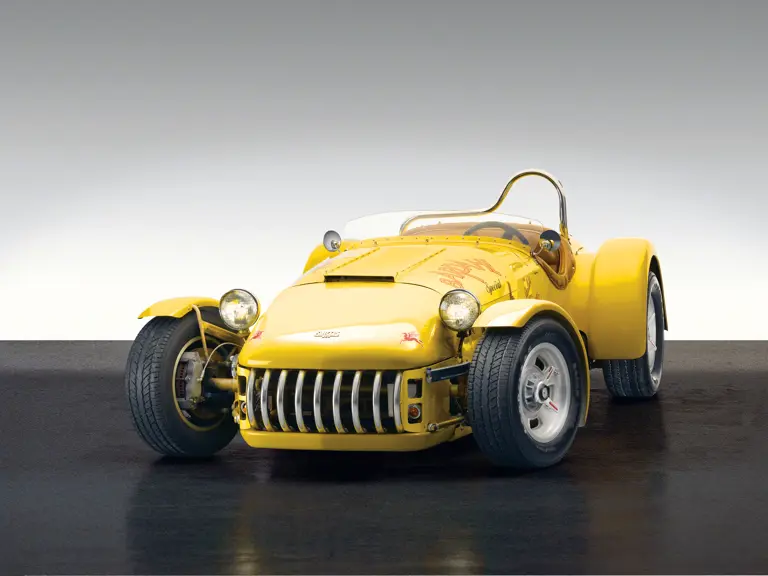
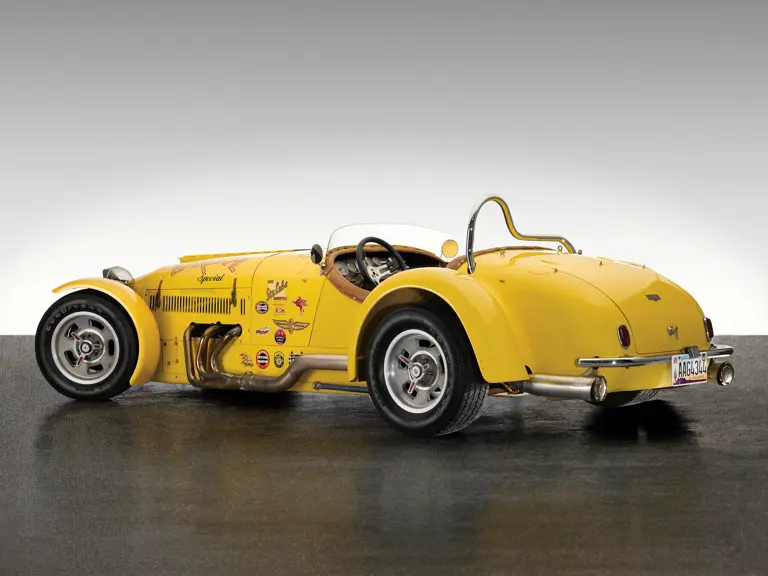

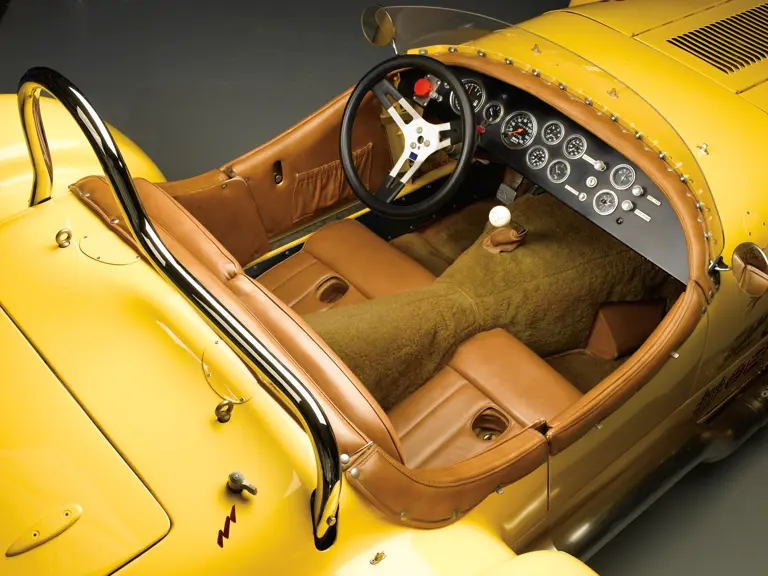

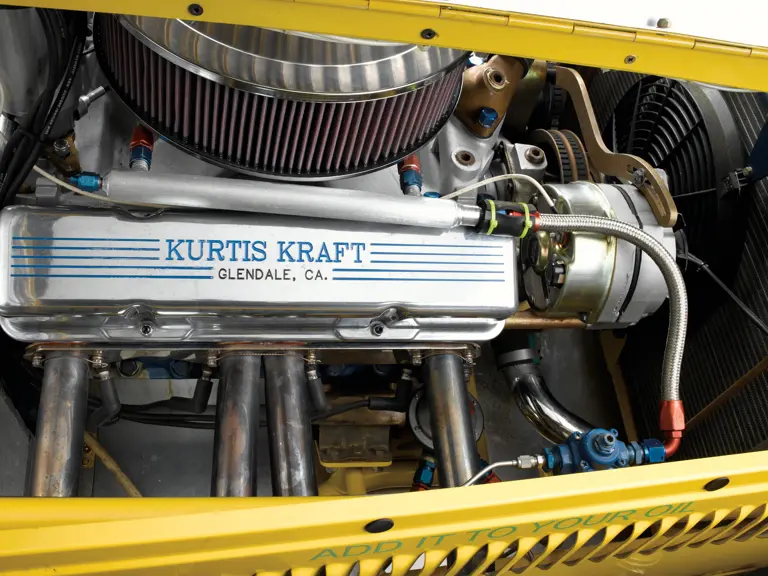
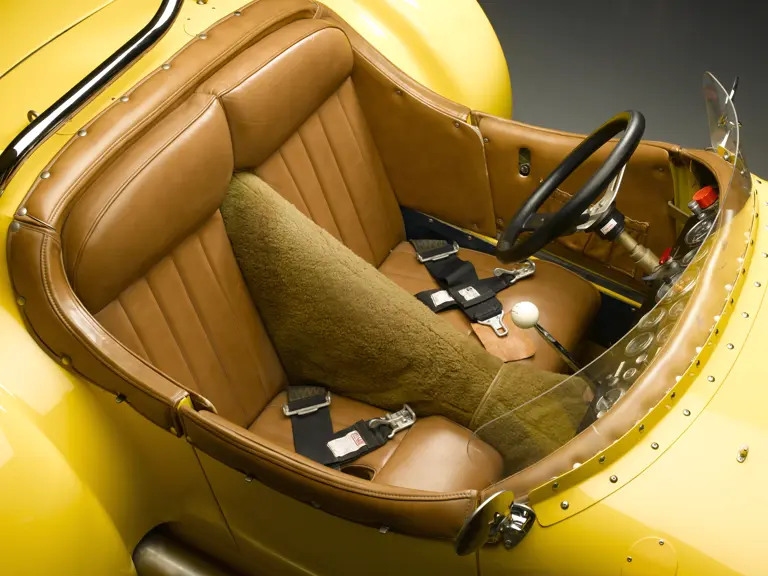

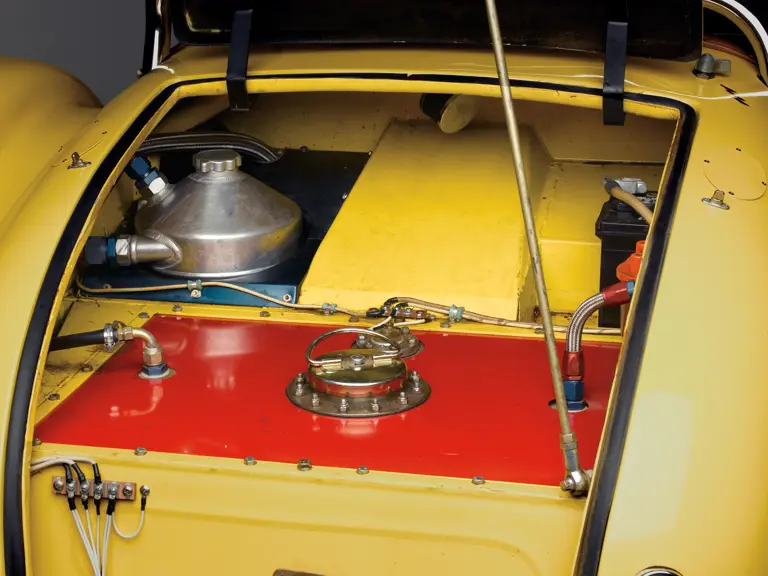

 | Monterey, California
| Monterey, California

